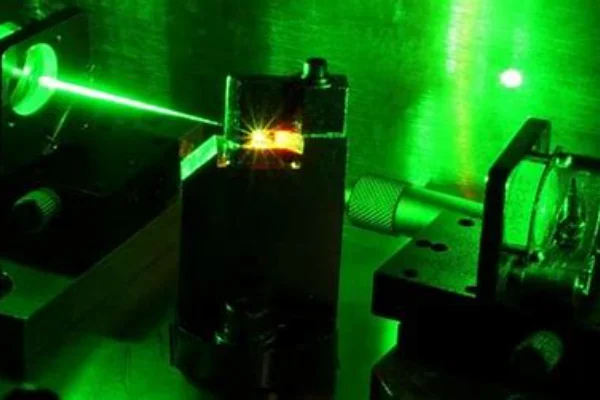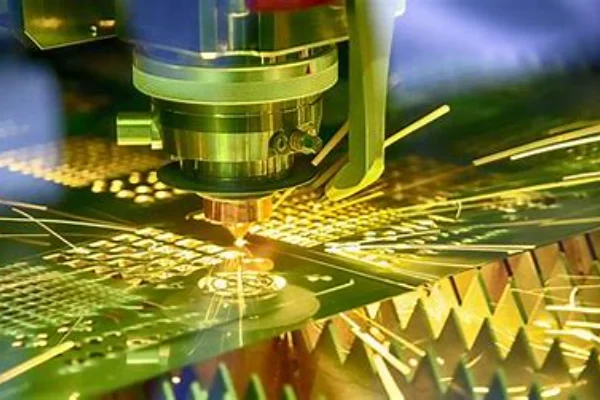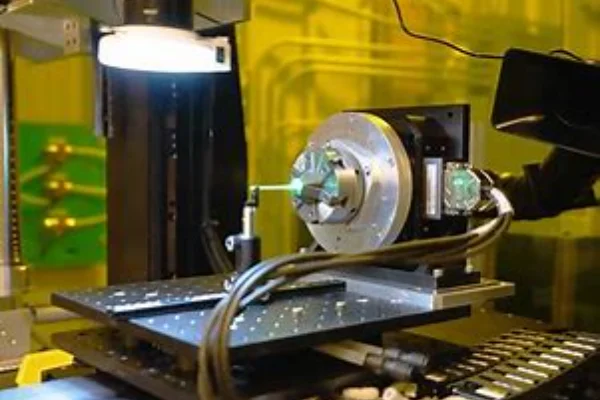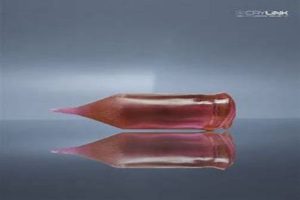Introduction
The technological advancement in the laser industry is remarkable, especially when it comes to ultrashort pulse generation. One of the key materials that has gained significant traction is Ytterbium-doped Gadolinium Gallium Garnet (Yb:GGG). In this comprehensive exploration, we shall dive deep into the nuances of Yb:GGG and its vital role in generating ultrashort laser pulses.

Understanding Ultrashort Pulse Generation
The realm of lasers and photonics has always been about pushing boundaries. Among the most exciting frontiers in this field is the generation and management of ultrashort pulses. These are not just shorter forms of regular light pulses. Their brevity, measured in femtoseconds to picoseconds, makes them a marvel of modern science.
An ultrashort pulse is essentially a concentrated burst of light energy packed into an incredibly short time span. When we say ‘femtosecond’ or ‘picosecond’, we’re talking about time frames that are unimaginably brief. A femtosecond, for instance, is a quadrillionth of a second. At this scale, light, which usually travels at a speed so fast we consider it instantaneous, only covers a distance smaller than the thickness of a human hair.
This temporal compression of light energy results in exceedingly high peak powers, even if the total energy of the pulse is relatively low. It’s like condensing the energy of an hour-long rainfall into a sudden, powerful downpour lasting just seconds. Such peak powers allow ultrashort pulses to interact with materials in ways that longer pulses or continuous wave lasers simply can’t.
The interactions enabled by these ultrashort pulses have the potential to unlock a plethora of applications. For instance, they can induce non-linear effects in materials, allowing scientists to probe and understand complex physical phenomena. Furthermore, their brief interaction times mean that they deposit energy before a material can significantly heat up, leading to precision ablation without thermal damage. This has broad implications in fields ranging from precision manufacturing to medical surgeries. In essence, understanding ultrashort pulse generation is akin to wielding a new tool that can reshape the landscape of photonics and its applications.

Yb:GGG – The Game Changer
In the dynamic and rapidly evolving world of laser technology, certain materials have emerged that truly redefine the capabilities and potentials of the industry. Yb:GGG, or Ytterbium-doped Gadolinium Gallium Garnet, is one such material. It stands as a cornerstone, reshaping the horizons of what’s possible in the domain of lasers.
One might wonder, what makes Yb:GGG so distinctive? It’s a combination of its intrinsic properties that are almost tailor-made for high-end laser applications. Imagine a material that not only handles heat efficiently but also has a vast range of emission capabilities. That’s Yb:GGG for you.
Its high thermal conductivity ensures stability even in demanding operational conditions. For any laser system, managing heat is of paramount importance. Excessive heat can cause distortions, reduce efficiency, or, in the worst case, damage the system. Yb:GGG’s impressive thermal properties allow it to operate smoothly, minimizing such risks and ensuring consistent, high-quality outputs.
But thermal conductivity is just one side of the coin. The real magic lies in its emission characteristics. Yb:GGG boasts an extensive emission bandwidth. This wide bandwidth is the key to its suitability for ultrashort pulse generation. The broader the bandwidth, the shorter the pulse that can be generated, and in the world of ultrashort pulses, this capability is gold.
Furthermore, the material’s broad absorption band in the near-infrared spectrum sets it apart. This characteristic ensures that the energy is absorbed efficiently and then re-emitted, making the process of energy transfer not only effective but also optimized for performance. This property is essential, especially when the objective is to generate powerful, yet brief, bursts of laser light.
In essence, Yb:GGG isn’t just another material in the laser industry. It represents a paradigm shift, opening up possibilities that were previously thought to be out of reach. Through its unique properties, it stands tall as the beacon of the next era in laser technology.

Yb:GGG in Femtosecond and Picosecond Lasers
In the intricate dance of laser technology, where precision and performance are paramount, Yb:GGG has established itself as an indispensable partner. Especially when it comes to femtosecond and picosecond lasers, the suitability of this material is unmatched.
Let’s start by understanding the landscape of femtosecond lasers. These lasers operate in extremely short pulses, so short that it’s a mere one-quadrillionth of a second. The challenges in crafting and perfecting such lasers are manifold. The pulse generation and compression stages, in particular, require materials that can offer a wide emission bandwidth. Yb:GGG, with its extensive bandwidth, becomes a natural fit. It doesn’t just stop at offering the bandwidth; the material ensures that the pulse compression happens efficiently. As a result, these lasers achieve peak powers that are unmatched, making them invaluable in tasks that range from precision material processing to intricate medical procedures.
On the other hand, picosecond lasers, while still operating at incredibly short time scales, bring forth a different set of challenges. With pulses spanning a trillionth of a second, managing heat and ensuring the system remains stable becomes vital. The wear and tear on materials in such an environment can be immense. This is where the high thermal conductivity of Yb:GGG shines brightly. It can handle the heat, disperse it effectively, and ensure that the system remains in optimal working condition, even when pushed to its limits. For industries and researchers who can’t afford a dip in performance, Yb:GGG becomes the go-to material, promising reliability and consistent results.
In summary, while the world of femtosecond and picosecond lasers is filled with nuances and technical challenges, the presence of materials like Yb:GGG simplifies the journey. By catering to the unique demands of each type of laser, it ensures that the laser world can continue to push boundaries and achieve results that were once thought impossible.

Advantages in Precision Machining and Material Processing
The fascinating interplay of science, engineering, and materials has always driven innovation in precision machining and material processing. As industries continuously strive for excellence, the demand for refined methods and materials, like Yb:GGG, has grown exponentially. With Yb:GGG as a forerunner in the advancements, the landscape of precision machining is experiencing unprecedented transformations.
One of the most pronounced benefits of Yb:GGG in material processing lies in its capacity for ultra-precise material removal. Traditional methods often grapple with challenges like heat dispersion and unintentional damage to surrounding regions. However, the ultrashort pulses facilitated by Yb:GGG tackle these issues head-on. These pulses, characterized by their high peak powers, interact with materials for such fleeting moments that the heat-affected zones are minimized. Such precision translates to multiple advantages: reduced material waste, decreased production costs, and improved product quality. When applied on a large scale, these efficiencies can lead to substantial economic and environmental benefits.
Moreover, the world of microfabrication — a realm where even the minutest error can render a product ineffective — greatly benefits from Yb:GGG’s capabilities. Microdevices, which have become the backbone of several industries, from electronics to healthcare, demand unparalleled precision. The lasers powered by Yb:GGG rise to this occasion. With their ability to produce intricate designs and patterns, they have revolutionized microfabrication. The days of fretting over minor inconsistencies are becoming a thing of the past, as Yb:GGG lasers ensure that every microdevice produced meets exact specifications. This precision opens doors to the development of innovative devices with enhanced functionalities and longevity.
But the prowess of Yb:GGG doesn’t stop at inanimate materials. The biomedical sector, which intersects human lives directly, is witnessing significant advancements thanks to this material. Medical procedures, particularly surgeries, require utmost accuracy and minimal invasiveness. Yb:GGG lasers, with their ultrashort pulses, have proven to be game-changers. Traditional surgical procedures, even when performed with lasers, often come with risks of collateral tissue damage. However, the Yb:GGG lasers’ pinpoint precision drastically reduces these risks. Surgeons can now make incisions and target affected areas with minimal damage to surrounding healthy tissues. This not only ensures faster recovery for patients but also reduces potential post-operative complications.
Beyond surgeries, the realm of medical diagnostics is also undergoing a metamorphosis with Yb:GGG. The same precision that aids in surgeries can be leveraged to obtain detailed tissue or cellular imagery. This allows medical professionals to diagnose conditions with higher accuracy and even detect issues at nascent stages, improving the overall prognosis for patients.
In conclusion, Yb:GGG is not just another addition to the array of materials available in the world of precision machining and material processing. It’s a catalyst, driving change and propelling industries towards greater excellence. Whether it’s ensuring that a microchip functions flawlessly, or guaranteeing that a surgical procedure is executed with minimal complications, Yb:GGG stands as a testament to the remarkable advancements in contemporary science and technology.

Conclusion
The world of lasers is undergoing rapid transformation, and Yb:GGG stands at the forefront of this revolution. Its unique properties and unmatched performance in ultrashort pulse generation make it indispensable. From precision machining to revolutionary biomedical applications, Yb:GGG promises to shape the future of laser technology.
FAQs
- 1. What is the significance of Yb:GGG’s wide emission bandwidth?
The wide emission bandwidth of Yb:GGG allows for efficient pulse compression in femtosecond lasers, ensuring high peak power generation. - 2. How does Yb:GGG ensure efficient energy transfer?
Yb:GGG has a broad absorption band in the near-infrared spectrum, which ensures effective energy transfer, making it ideal for ultrashort pulse generation. - 3. Why is thermal conductivity vital for picosecond lasers?
High thermal conductivity ensures consistent performance of the material under various operational conditions, making Yb:GGG a preferred choice for picosecond lasers. - 4. How does Yb:GGG contribute to reducing waste in precision machining?
With its ability to generate ultrashort pulses, Yb:GGG ensures precise material removal, minimizing waste and enhancing overall efficiency. - 5. What role does Yb:GGG play in the biomedical field?
Yb:GGG lasers are instrumental in surgeries and diagnostics, offering minimal tissue damage and improved accuracy due to their ultrashort pulse generation capability.







